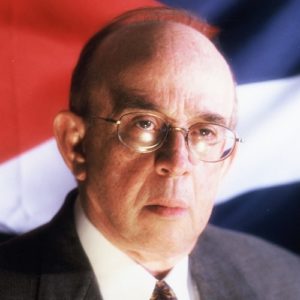Unsuccessful attempt in April 1961 to invade Cuba and overthrow the Fidel Castro regime (which refers to the event by the name of the main landing beach, Playa Girón). Already by the final months of the Eisenhower administration, the United States’ relations with Cuba had so deteriorated that the Central Intelligence Agency had begun training groups of Cuban exiles in Guatemala for an attack on Cuba. Eight B-26 bombers raided Cuba from Nicaragua early on April 15, 1961, to destroy Cuba’s air force on the ground. In the apparent belief this had been done, the land invasion, by the Brigade 2506, was launched two days later and landed at the Bahía de Cochinos (Bay of Pigs), on the Zapata Peninsula, a remote piece of the island’s southern coast. The CIA thought it the ideal location for a landing, as there were only two highways leading through the swamps to the landing area. From a defensive point of view, the beach would be easy to hold, but difficult to leave. The CIA’s paramilitary organization believed that Castro would be completely fooled since the Zapata swamp represented such an unlikely invasion site. It was unaware that it was a region where the Movimiento Veintiseis de Julio had concentrated its efforts over the previous two years, completely winning over the local population, no small contribution to the ultimate fiasco.
For the CIA, the Cuban internal situation also seemed propitious for this attempt to overthrow the regime. Although Castro still counted on significant popular support, that support had progressively decreased. His own Movimiento was badly split on the issue of communism. Also, a substantial urban guerrilla movement existed throughout the island, composed of former Castro allies, Batista supporters, Catholic groups and other elements that had been opposed to the Revolution of 1959 or become alienated from it, and significant unrest was evident within the armed forces. The underground saw the intended landing of the US-sponsored invasion force as the culminating event to follow a series of uprisings and acts of sabotage that they hoped would split the army and weaken the regime’s hold over the people. It would coincide with Castro’s assassination and with a coordinated sabotage plan. In the weeks prior to the invasion, violence increased, bombs exploded, shops were burned. Yet the planners in exile were not counting on the forces inside Cuba. They placed an unjustified faith in the invasion’s success and feared the underground might have been infiltrated by the regime. Arms to be shipped into Cuba never arrived, and communications between the exiles and the underground were sporadic and confused. The latter was not alerted to the date of the invasion until the very day, April 17, when it could only watch the resulting disaster in confusion and frustration.
The whole affair was a tragedy of errors. Although the Cuban government did not know the date or exactly where the exile forces would land, the fact than an invasion was in the offing was known inside Cuba and out, and dispersal had served to save half of Castro’s warplanes. The survivors were sent against the invaders’ supply vessels, and the one ship that held all of their weapons and ammunition was sunk on the first day. The invasion site was too sparsely populated for the invaders to expect any help from local residents, even if they had been friendly. Surrounded by swamps, the site also offered little access to nearby mountains where a guerrilla war could have been mounted if the invasion failed. Some follow-up air raids by Cuban exiles against Cuban airfields were cancelled at the last minute by an apparently confused and indecisive President Kennedy, who ordered no further United States involvement. The circumstances are still controversial. Was Kennedy led to believe that success was possible without overt US involvement? Did he perhaps refuse such involvement because of the effect on world opinion, or to appease the Soviet Union? Or was he seeking to assert his authority over a CIA that thought it could pressure him into rescuing an operation gone awry through its own overconfidence? It seems clear that his own immediate advisers were an antagonistic mix of doves and hawks. Castro took control of the air and his remaining four Hawker Sea Furies and three T33s easily shot down the exiles’ B-26s, flying without rear gunners to increase their range.
While the invasion was in progress, Soviet leader Khrushchev threatened: “The government of the United States can still prevent the flames of war from spreading into a conflagration which it will be impossible to cope with. The world political situation now is such that any so-called ‘small war’ can produce a chain reaction in all parts of the world.”
Of the invading force of 1,400 men, more than 100 were killed and some 1,189 taken prisoner. Government forces lost 151 killed. The failure of the invasion and the brutal repression that followed smashed the entire Cuban underground. On the first day of the invasion, the regime arrested thousands of real, and suspected, opponents. The resistance never recovered. His regime strengthened and consolidated, Castro boasted of having defeated a “Yankee-sponsored invasion.” The disillusionment and frustration caused by the Bay of Pigs fiasco among anti-Castro forces, both inside and out of Cuba, prevented the growth of significant organized opposition. Meanwhile, the prestige of the United States in Latin America and throughout the world sank to a low point.









1 comentario en “BAY OF PIGS INVASION”
Deplorable, anémica, estreñida y deprimente historieta de mal gusto.
Los comentarios están cerrados.